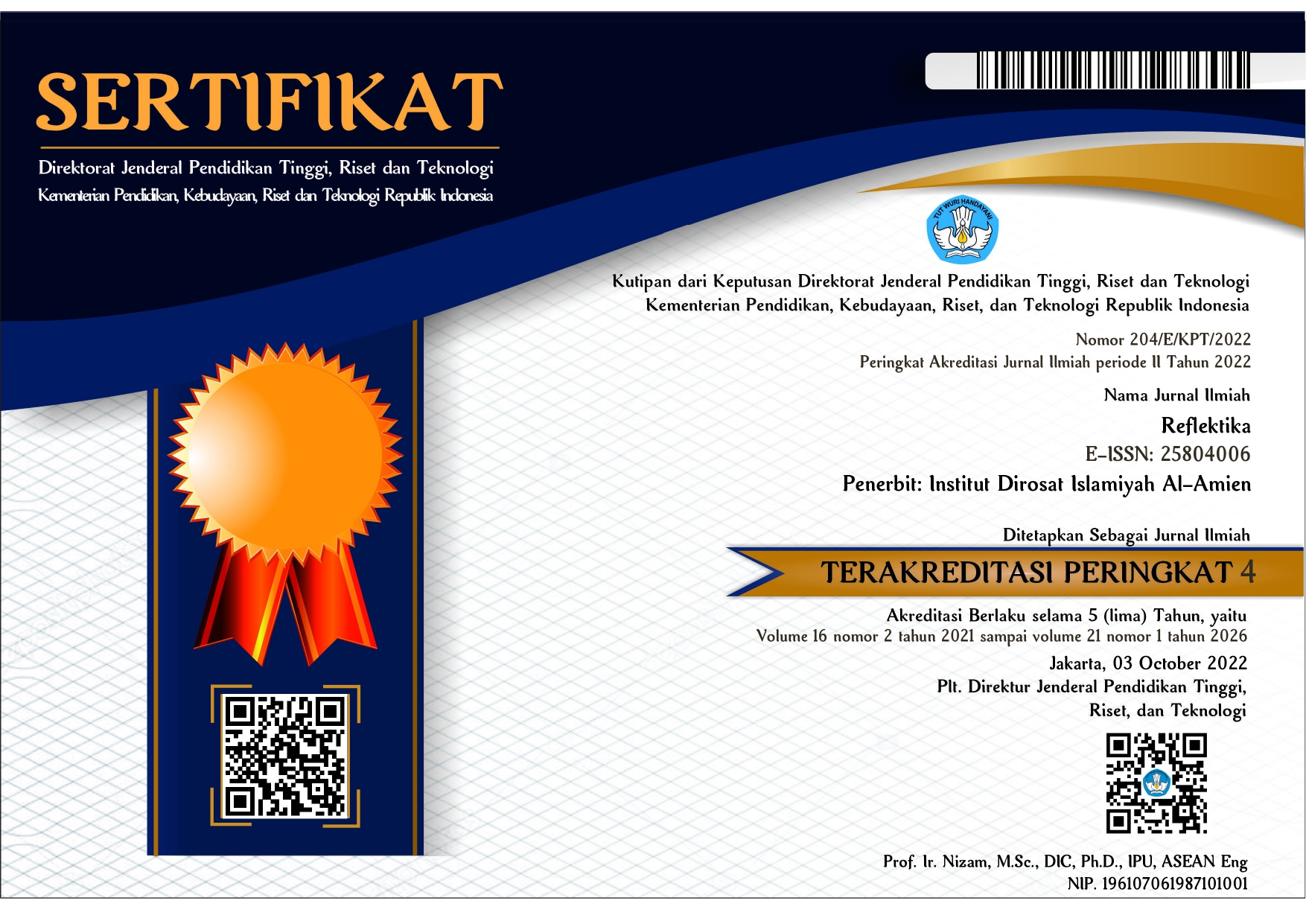PRAKTIK DAN MOTIVASI MERUQYAH DENGAN AYAT KURSI
Abstract
Exorcism is a culture and heritage that must be preserved as an effort for Muslims to serve the community. The existence of exorcism in Indonesia has an important role, this is because in the life of Indonesian people there are two types of diseases, namely; ordinary and extraordinary diseases. In this extraordinary disease, exorcism has a role in society.
This research is a qualitative research with a case study that seeks to reveal the practice and motivation of a person to become a exorcismer by using Ayat Kursi as a medium of ruqyah. In doing treatment, exorcismer uses readings from the Qur'an and hadith to treat someone's illness. One of the verses read in medicine is Ayat Kursi, which is a verse that has many fadilah and its virtues as a protective fortress for its readers, the greatest verse, the leader of the verses of the Qur'an. While the motivation to become exorcismer is to help others as an effort to get closer to Allah.
Keywords
References
Akhmad, Perdana. Ruqyah Syar’iyyah Vs Ruqyah Gadungan (Syirkiyyah). Yogyakarta: Qur’anic Media Pustaka, 2005.
Asy Syarqowi, Ahmad. Keajaiban Ayat Kursi. Solo: Aqwam Media Profetika, 2007.
Farhan, Ahmad. “Studi Living Al-Qur’an Pada Praktek Quranic Healing Kota Bengkulu (Analisis Deskriptif Terhadap Penggunaan Ayat-ayat Al-Qur’an).†Refleksi, vol.16, no. 1 (2017): 67–82.
Istadiyantha, Sutarjo. “Pengobatan Alternatif dalam Islam: Studi Kasus Terhadap Surau Tarekat Naqsyabandiyah di Eks-Karesidenan Surakarta.†Fakultas Sastra, Universitas Sebelas Maret, 1999.
Jamal, Ibrahim Muhammad Hasan. Meraih Kesembuhan Dengan Do’a. terj. E Kusdian. Bandung: IBS, 2004.
Karimi, Reza Muhammad. Pengobatan Dengan Al-Qur’an. terj. Najib Husain Al-Idrus. Jakarta Selatan: Penerbit Cahaya, 2007.
Moleong, Lexy J. Metodologi Penelitian Kualitatif. Bandung: PT. Remaja Rosdakarya, 2011.
Muadzin, dan Muhadi. Semua Penyakit Ada Obatnya, Menyembuhkan Penyakit Ala Rasulullah. Yogyakarta: Mutiara Media, 2009.
Mubarak, Saiful Islam. Kiai Meruqyah Jin Berakting. Bandung: Syamil Cipta Media, 2006.
Mundziri, Imam. Ringkasan Shoheh Muslim. terj. Ahmad Zaidun. Jakarta: Pustaka Amani, 2003.
Setyawan, Sigit Dwi, dan Yadi Purwanto. “FENOMENA TERAPI RUQYAH DAN PERKEMBANGAN KONDISI AFEKSI KLIEN.†Indigenous: Jurnal Ilmiah Psikologi, vol., no. 0 (1 November 2007). https://journals.ums.ac.id/index.php/indigenous/article/view/4657.
Siregar, Muhammad Shulhi Alhadi. “KEAMPUHAN AYAT AL-QUR’AN SEBAGAI SARANA PENGUSIR SETAN (ANALISIS BUKU SENJATA SPRITUAL SANTRI).†Jurnal AL-MAQASID: Jurnal Ilmu Kesyariahan dan Keperdataan, vol.4, no. 1 (30 Juni 2018): 132–144.
Wijayanti, Binar Aji. “PRDISPOSING, ENABLING DAN REINFORCING FACTORS PADA PASIEN DI PENGOBATAN ALTERNATIF RADIESTHESI MEDIK (Studi Di Pengobatan Alternatif Radiesthesi Medik Metode Romo H.Loogman, MSC Di Purworejo Jawa Tengah).†Skripsi, UNIVERSITAS AIRLANGGA, 2006. http://lib.unair.ac.id.
Yasir, Fadlan Abu. Terapi Gangguan Jin dengan Ruqyah dan Do’a. Yogyakarta: Aqsha, 2002.
Wawancara
KH. Jakfar
Pak Nadira
Sahri
Pardi
Haqi
Siroj
DOI: 10.28944/reflektika.v15i2.401
Refbacks
- There are currently no refbacks.


.png)

